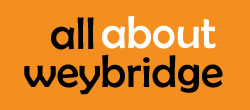Lease vs. Buy Dental Equipment: Financial Analysis for New Dentists
Any new dentist or aspiring practice manager will want to make sure that the numbers stack up and that their budget is working for them from day one. The issue is that with so many different pieces of equipment to procure, how do you achieve value for money across the board?
To answer this question, we’re going to weigh up the leasing and purchasing routes, allowing you to see where the right balance potentially lies.
How Does Leasing Work?
Leasing something is essentially the same as renting it from a trusted supplier. Consumables such as cleaning products and disposable items clearly cannot be leased because they have to be continually replenished, but high-value equipment for permanent installation can be used. This applies to many industries, not just dentistry, and is often done to improve the cashflow.
Many leasing providers will include maintenance and upgrade options as part of a larger package, selling practice managers on the all-inclusive approach they can enjoy. The downsides of leasing are that it will cost more than purchasing over the longer term, nothing is being added to the balance sheet of the practice, and that some leasing agreements may put restrictions on usage.
Should You Buy Equipment?
While purchasing equipment will typically cost more initially than leasing due to the larger capital investment, everything you purchase moves straight onto the balance sheet. This means that while cash reserves are reduced, the assets the practice holds increase. Many practice managers choose to purchase high-value equipment from trusted suppliers like Kent Express because they can secure value for money, greater flexibility, and more control of how they run their business.
Financial Analysis: What Is It?
You may feel strongly one way or the other after reading the previous sections, but slowing down and considering the numbers in more detail is the most important thing here. Conducting a financial analysis involves projecting your initial investment budget across months and years, allowing you to factor in the other constraints, demands, and revenue streams. Here are some examples:
- Calculate the monthly recurring payments that a leasing agreement will tie you to
- Estimate the likely running maintenance costs for equipment you own outright
- Consider how much money will need to be put aside for future upgrades of the equipment you own
It’s this type of multi-variable analysis that will help you to put your practice on a secure footing that will make all the difference. The more you dive into the details and consider the numbers, the more you will be able to protect your future success. There are also other variables that you need to build into your analysis.
Consider Tax Implications
In some cases, part of the lease payments could be used to offset profits and help you to save tax. The downside is that you are not adding anything to the balance sheet of the practice, so it is not becoming more valuable as a business in that sense. Discussing the purchase of high-value equipment with an accountant or solicitor will help you to plan accordingly so that you can safeguard your practice and extract maximum value for money.
Factor In The Cashflow Impact
Estimating the revenue coming into the practice and the amount of money that will exit it in terms of rent, operational costs, and wages will be very important. Just because you currently have enough money in your business account to purchase a piece of equipment doesn’t necessarily mean that you can actually afford it. Cashflow is what allows your practice to function because it is what enables you to continually pay for your overheads while other revenue comes in.
Evaluate New Technology
Being able to have the cash reserves to upgrade key equipment as and when you need to is vitally important when you want to be able to grow a successful practice. By making sure that you can react to emerging trends and continually give your patients the very best, you can keep your practice two steps ahead of the local competition. Exactly what you want to hear when you’re looking to build a business that will earn you a good living for many years to come.
Which Is Best For Me?
A careful analysis of all of the factors outlined above is the best way to answer this question. Rather than sticking doggedly to one approach or the other, keeping an open mind and thinking about how each option impacts the numbers is always the best way to do things in business.
